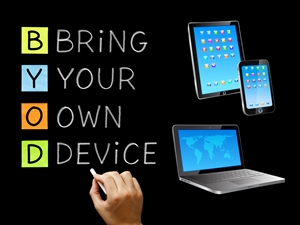
In the past, if administrators wanted to ensure their employees had mobile technological resources, they would have to provide these devices for their staff in out-of-pocket fashion. However, times have changed and, more often than not, individuals come equipped with the latest and greatest smartphones, tablets or laptops. What do you need to know to for successful deployment of your BYOD practices?
In the current business environment, employees are increasingly leveraging their handheld hardware not only for personal pursuits, but to further company efforts as well. As this practice spreads throughout and beyond the enterprise sector, organizations must consider implementing a formal bring-your-own-device policy to support such an initiative. This can ensure that staff members are using their mobile gadgets is a way that will best benefit the company.
While BYOD may seem straightforward enough, there are several aspects to take into consideration to ensure the practice’s success, including the following:
Network resources
Some of the first factors to consider are the available network resources that can be leveraged by employees’ mobile devices. As more endpoints access network bandwidth, bottlenecks and drags could emerge if there is not enough broadband to go around. As a result, employees will experience slow performance from online platforms. In fact, a recent CloudGenix infographic stated that 86.5 percent of professionals admitted their less-than-favorable wide area network negatively impact business-critical applications.
To prevent this issue and ensure that resources are available, decision-makers should consider implementing a WAN management system that will direct network traffic effectively. Furthermore, WAN optimization can also provide improved service delivery, enhancing workers’ ability to utilize their mobile devices for company purposes.
Business goals
DATEL blog contributor Christine Jehle also noted that leaders should consider the business goals that BYOD could help the organization achieve. Decision-makers should think about whether or not a BYOD initiative will help further the efforts of the company. If the project doesn’t fit in with current objectives, administrators may want to rethink its deployment. Jehle advised seeking staff input in these regards to get a better idea of the business benefits of BYOD.
“If your employees are asking for the ability to use their own devices for work, then ask them for their ideas on how that will help them be productive,” Jehle wrote. “If your employees have ideas on how using their own devices will make their job easier, make them more efficient, increase their mobility, etc., then it is something to consider.”
